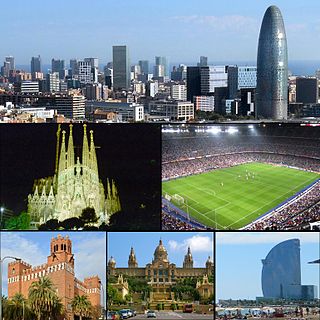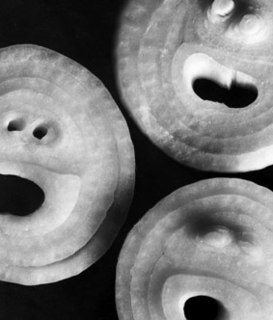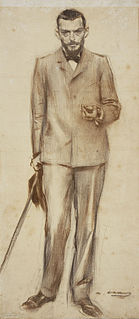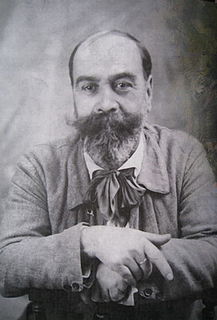Joaquim Gomis Serdañons (1902 in Barcelona – 1991) was a Catalan photographer, collector, entrepreneur, and promoter of the arts.

Barcelona is a city in Spain. It is the capital and largest city of the autonomous community of Catalonia, as well as the second most populous municipality of Spain. With a population of 1.6 million within city limits, its urban area extends to numerous neighbouring municipalities within the Province of Barcelona and is home to around 4.8 million people, making it the sixth most populous urban area in the European Union after Paris, London, Madrid, the Ruhr area and Milan. It is one of the largest metropolises on the Mediterranean Sea, located on the coast between the mouths of the rivers Llobregat and Besòs, and bounded to the west by the Serra de Collserola mountain range, the tallest peak of which is 512 metres high.
Gomis was born in Barcelona on September 19, 1902 to a wealthy family. His father owned a business in the cotton trade and his grandfather Cels Gomis (Reus, 1842 - Barcelona, 1915) was a civil engineer with intellectual interests. At the age of twelve, Gomis acquired his first camera−a Brownie−which he used to take his first photographs. In 1919 he received his degree in accounting, and beginning in 1921 he lived in England and the United States. These periods abroad enabled Gomis to produce photo series based on the architecture and urban landscapes of the places he visited. In 1929 he married Odette Cherbonnier in Paris.
Joaquim Gomis was well-respected in artistic circles, which were somewhat taken aback when he began photographing the work of Gaudí, an architect who was underrated at the time. In 1930 Gomis became a founding member and the first president of the Amics de l'art nou (Friends of New Art) association and was also a founding member of Club 49 in 1949. During the Spanish Civil War, Gomis lived in Paris and traveled in Europe. In 1939, at the end of the war, he returned to Barcelona.
In 1940, in collaboration with Joan Prats, Gomis published his fotoscops, a series of books with images in sequential order. Although his first series was about a eucalyptus, some of the subjects he covered were Gaudí's Sagrada Familia church, the Cathedral of Tarragona, the works of Joan Miró, and the city of Barcelona.
His photographic production can be associated with the Neues Sehen movement and is considered one of the exceptions within a context dominated by pictorialism. In 1952 he was named president of the Amics de Gaudí (Friends of Gaudí) group, and from 1972 to 1975 he presided over the Fundació Joan Miró. Exhibitions of Joaquim Gomis' work include a show held at the IVAM in Valencia in 1997, with previously unpublished images from the period he spent in the United States from 1922 to 1923. Some of his works are held in the Museu Nacional d'Art de Catalunya.

The Neues Sehen, also known as New Vision or Neue Optik, was a movement, not specifically restricted to photography, which was developed in the 1920s. The movement was directly related to the principles of the Bauhaus. Neues Sehen considered photography to be an autonomous artistic practice with its own laws of composition and lighting, through which the lens of the camera becomes a second eye for looking at the world. This new way of seeing was based on the use of unexpected framings, the search for contrast in form and light, the use of high and low camera angles, etc. The movement was contemporary with New Objectivity with which it shared a defence of photography as a specific medium of artistic expression, although Neues Sehen favoured experimentation and the use of technical means in photographic expression.

The Fundació Joan Miró, Centre d'Estudis d'Art Contemporani is a museum of modern art honoring Joan Miró located on the hill called Montjuïc in Barcelona, Catalonia (Spain).

The Museu Nacional d'Art de Catalunya, abbreviated as MNAC, is the national museum of Catalan visual art located in Barcelona, Catalonia, Spain. Situated on Montjuïc hill at the end of Avinguda de la Reina Maria Cristina, near Pl Espanya, the museum is especially notable for its outstanding collection of romanesque church paintings, and for Catalan art and design from the late 19th and early 20th centuries, including modernisme and noucentisme. The museum is housed in the Palau Nacional, a huge, Italian-style building dating to 1929. The Palau Nacional, which has housed the Museu d'Art de Catalunya since 1934, was declared a national museum in 1990 under the Museums Law passed by the Catalan Government. That same year, a thorough renovation process was launched to refurbish the site, based on plans drawn up by the architects Gae Aulenti and Enric Steegmann, who were later joined in the undertaking by Josep Benedito. The Oval Hall was reopened in 1992 on the occasion of the Olympic Games, and the various collections were installed and opened over the period from 1995 to 2004. The Museu Nacional d'Art de Catalunya was officially inaugurated on 16 December 2004. It is one of the largest museums in Spain.













